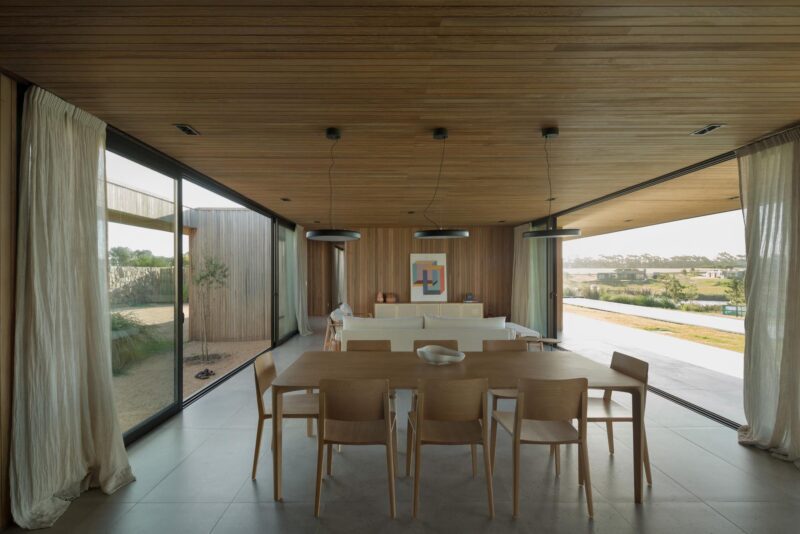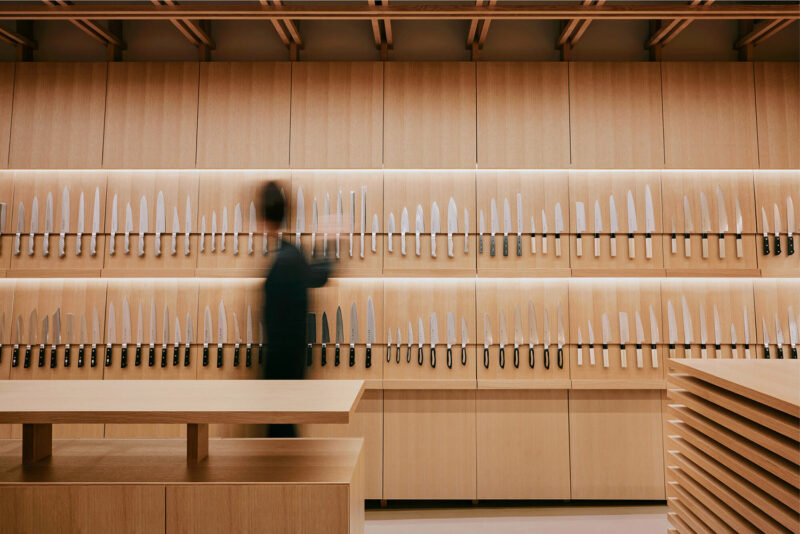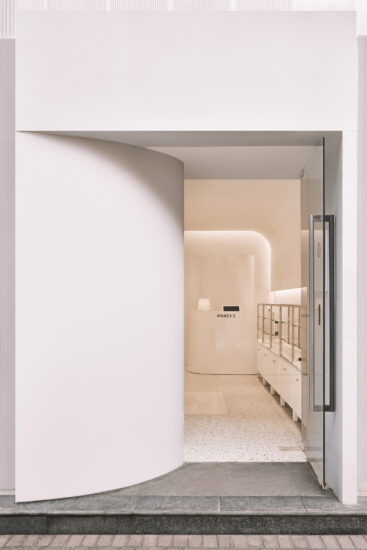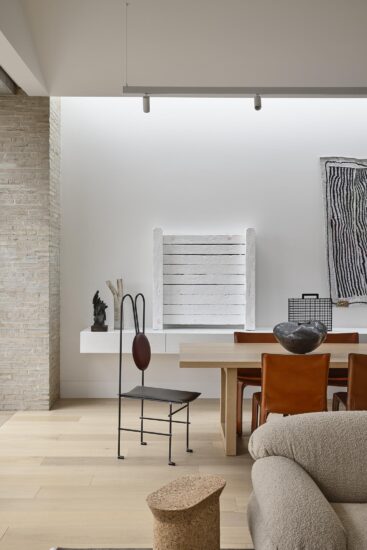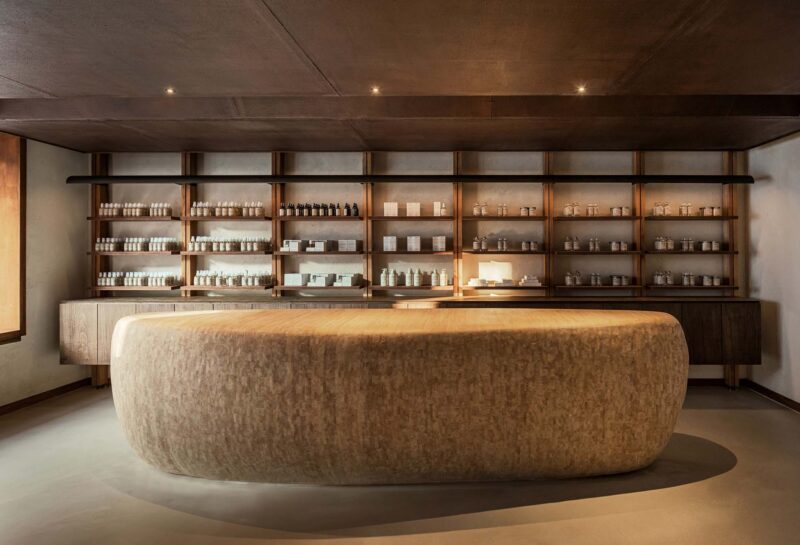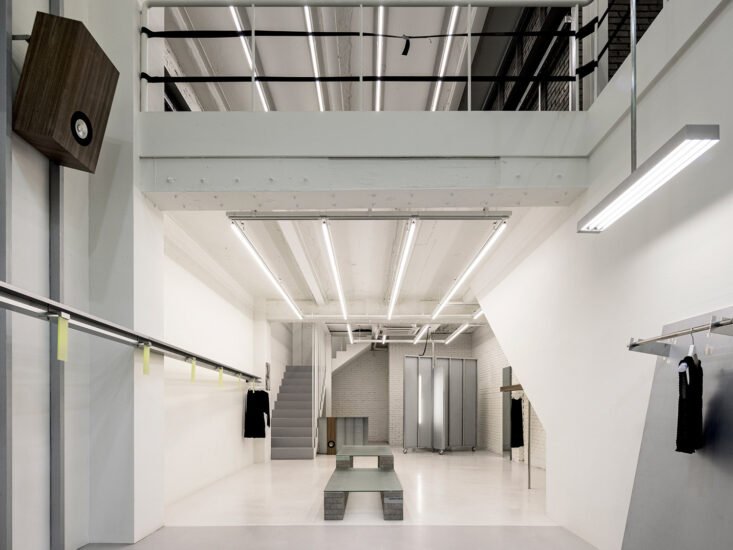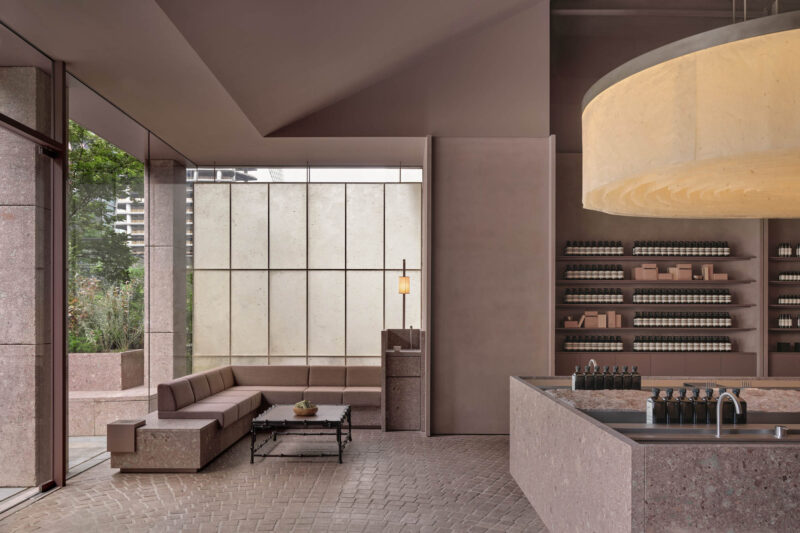京都Bang & Olufsen快闪店是由Yusuke Seki设计的一个极简主义空间。在三个月的时间里,这个项目把京都一家旧服装店的两层变成了丹麦音响设备公司Bang和Olufsen的零售空间。临时商店填补了服装品牌的离开和建筑的拆除之间的时间间隔,有效地赋予了大厦新的生命。
Bang & Olufsen Pop-Up Store Kyoto is a minimalist space located in Kyoto, Japan, designed by Yusuke Seki. Over the course of three months, this project transformed two floors of a former clothing store in Kyoto into a retail environment for the Danish audio equipment company Bang and Olufsen. The pop-up store filled a temporal gap between the departure of the clothing brand and the building’s demolition, effectively giving a new lease on life to the edifice.
其中展示桌是由Yusuke Seki专门为这个空间设计的。混凝土块是现场浇筑的,每一块木头先被组装成一个模子,然后用混凝土填充。在混凝土硬化后,模具的两边被移除,剩下的部分作为桌腿。
The display tables were designed by Yusuke Seki specially for this space. The concrete blocks weighing them down were not placed there, but rather cast on site. For each, four pieces of wood were first assembled into a mold, then filled with concrete.Upon the concrete hardening, two sides of the mold were removed, leaving the remaining pieces to serve as table legs.
该设计是应对长期存在于设计师脑海中的一个问题的机会:人们怎么能想象木材用于制造混凝土的新用途,否则将其丢弃?利用模具作为建筑元素和家具组件是解决这个问题的一个方法。用于此目的的木材是铁杉,它是一种相对昂贵的材料,在日本神社建筑中经常见到,从而突显了这种副产品的新价值。此外,被移除的模具元素并没有被丢弃,而是作为建筑过程的叙事线索在商店中展示。对回收材料和减少浪费的关注也影响了空间的设计。
The design was an occasion to grapple with an issue that had long been on the designer’s mind: how might one imagine a new use for the wood used in creating concrete, which is otherwise thrown away? To utilize the mold as both constructive element and furniture component was one way to get around this problem. The wood used for this purpose was tsuga, a relatively expensive material that is often seen in Japanese shrine architecture, thus underlining the new value given to this byproduct. Moreover, the removed mold elements, rather than being thrown out, were subsequently displayed in the store as a narrative trace of the construction process. A concern with recycling materials and minimizing waste also informs the design of the space.
由于商店的临时性质,Yusuke Seki已经努力尽可能多地重复使用原始的物质,以最小的方式达到最大的效果。墙壁和天花板处于拆除状态,照片被放置在曾经有架子的地方。在二楼的后部,添加了白色碎石,这在京都附近的神社中可以看到,将空间的这一部分转化为一种神圣的复合物——反映了听音乐的体验是如何立刻成为一种精神的体验。
Conscious of the store’s temporary nature, Yusuke Seki has strived to reuse as much of the original substance as possible and to achieve maximum effect with minimal means. The walls and ceiling have been left in a state of mid-demolition, with photographs installed in the cavities left by where shelves once were. In the back part of the first floor, the addition of white gravel, a reference to a common practice seen in Jinja shrines around Kyoto, transforms this part of the space into a sort of sacred compound – mirroring how the experience of listening to music can at once be a spiritual one.
主要项目信息
项目名称:京都Bang & Olufsen快闪店
项目位置:日本京都
项目类型:商业空间/零售店
完成时间:2019
设计公司:Yusuke Seki
摄影:Tomooki Kengaku
客户:Bang & Olufsen

















